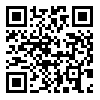مجله رویش روانشناسی از دادن گواهیهای کاغذی معذور است. لطفا تقاضا نکنید. همه گواهی ها در صفحه شخصی کاربران موجود است.
year 11, Issue 2 (spring 2021 2022)
Rooyesh 2022, 11(2): 105-116 |
Back to browse issues page
Ethics code: IR.SHAHED.REC.1400.042
Download citation:
BibTeX | RIS | EndNote | Medlars | ProCite | Reference Manager | RefWorks
Send citation to:



BibTeX | RIS | EndNote | Medlars | ProCite | Reference Manager | RefWorks
Send citation to:
Mohammadipour Rik N, Roshan R, Farahani H, Abolghasemi A. (2022). Psychometric properties of the Persian Non-Suicidal Self-Injury Expectancies Questionnaire in high school students. Rooyesh. 11(2), 105-116.
URL: http://frooyesh.ir/article-1-3321-en.html
URL: http://frooyesh.ir/article-1-3321-en.html
1- PHD student, Department Of Psychology, Faculty of Literature and Humanities, Univercity of Shahed, Tehran, Iran.
2- Professor in Psychology, Department Of Psychology, Faculty of Literature and Humanities, Univercity of Shahed, Tehran, Iran. ,Roshan@Shahed.ac.ir
3- Assistant Professor in Psychology, Department Of Psychology, Faculty of Humanities, Univercity of Tarbiat Modarres, Tehran, Iran.
4- Professor in Psychology, Department Of Psychology, Faculty of Literature and Humanities, Univercity of Guilan, Rasht, Iran.
2- Professor in Psychology, Department Of Psychology, Faculty of Literature and Humanities, Univercity of Shahed, Tehran, Iran. ,
3- Assistant Professor in Psychology, Department Of Psychology, Faculty of Humanities, Univercity of Tarbiat Modarres, Tehran, Iran.
4- Professor in Psychology, Department Of Psychology, Faculty of Literature and Humanities, Univercity of Guilan, Rasht, Iran.
Abstract: (2435 Views)
The aim of this study was to study the psychometric properties (reliability and validity) of the Persian version of The Non-Suicidal Self-Injury Expectancies Questionnaire (NSEQ) in high school students. The present study is descriptive and evaluative and studies population is all first and second-grade high school students in Rasht in the academic year 1399-1400. 1900 people were selected by cluster random sampling and they completed the Functional Assessment of Self-Mutilation (FASM, Lloyd, Et al, 1997), Cognitive Emotion Regulation Questionnaire- Short (CERQ-S, Garnefski& Kraaije, 2006), the Persian version of The Non-Suicidal Self-Injury Expectancies Questionnaire (NSEQ, Hasking, Boyes, 2017), Self-Efficacy to Avoid NSSI (SEA-NNSI, Czyz Et al, 2014), and general Self-Efficacy (GSE, Schwarzer & Jerusalem, 1997). Results of confirmatory factors analysis showed that the Persian version of the questionnaire had a good fit with its five initial factors and had simultaneous, divergent validity and high internal consistency (All factors between 0.75 and 0.85). Therefore, the Persian version of this questionnaire can be used to assess the population of Iranian students and adolescents.
Keywords: Outcome expectation questionnaire, self-efficacy expectation, confirmatory factor analysis, validity, reliability.
Type of Article: Research |
Subject:
Psychometric
Received: 2021/11/6 | Accepted: 2021/12/29 | ePublished: 2022/04/30
Received: 2021/11/6 | Accepted: 2021/12/29 | ePublished: 2022/04/30
Send email to the article author
| Rights and permissions | |
 |
This work is licensed under a Creative Commons Attribution-NonCommercial 4.0 International License. |







